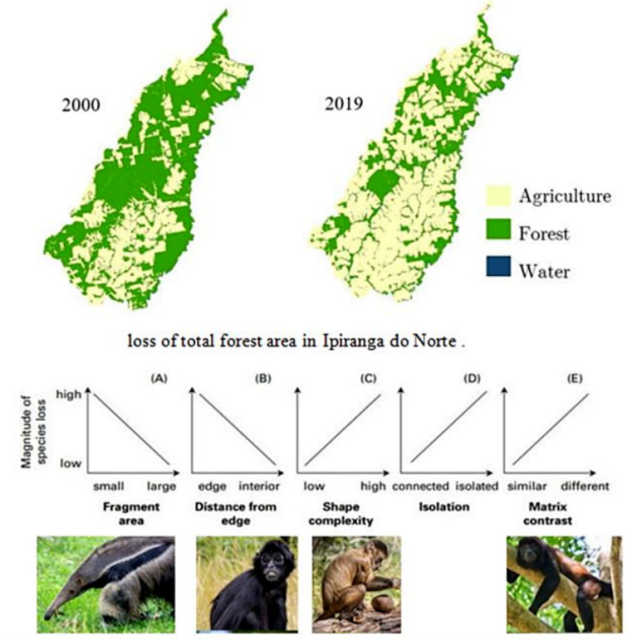Spatial Analysis of the Drivers, Characteristics, and Effects of Forest Fragmentation
By Z.Slattery and R.A.Fenner
Sustainability 2021, 13, 3246
This study uses Landsat remote imaging to examine whether specific drivers of forest fragmentation cause particular fragmentation characteristics, and how these characteristics can be linked to their effects on forest-dwelling species. It focuses on areas in Brazil which have undergone a high level of a specific fragmentation driver, in particular either agricultural expansion or commodity driven deforestation. Fragstats fragmentation software is used to calculate quantifiable fragmentation metrics, which are linked to species traits to assess their responses to forest fragmentation. Results indicate that, in areas that underwent agricultural expansion, the remaining forest patches became more complex in shape. This negatively affects species which are either highly dispersive or specialist to core forest habitat. In areas that underwent commodity-driven deforestation, forest patches would become less aggregated and create disjunct core areas. This negatively affects smaller, sedentary animals which do not naturally travel long distances. This study is significant on that it links individual fragmentation drivers to their landscape characteristics, and in turn uses these to predict effects on species with particular traits.
This paper is available online at: https://doi.org/10.3390/su13063246

